 p
pWild garlic
Spring is in the air and wild garlic is a truly idyllic culinary treat – a wild ingredient that, when in season, grows in abundance, nestled among bluebells, attracted by the moist soil and shady woodland environment. Wild garlic has enjoyed a culinary boom in recent times, taking its place alongside rhubarb and asparagus as a pillar of spring’s bounty. It has a short season, usually first appearing in mid-March and lasting until early May.
Wild garlic can be identified by its distinctive smell, long pointed leaves and white flowers, which bloom at the end of the season. Don’t pick wild garlic that has large amounts of white flowers, as this indicates older leaves which are likely to be slightly woody and bitter in flavour.
Although the pungent smell of garlic makes it easy to identify, always take care when foraging your own ingredients – there have been cases of people mistaking poisonous plants (such as Lily of the Valley) for wild garlic. That said, it is certainly one of the easiest things to forage for, as wild garlic smells particularly strong.

Wild garlic doesn’t have to be foraged. It’s a frequent staple of food markets at the peak of the season. As with all vegetables, choose wild garlic with bright, fresh leaves and avoid specimens that have wilted.
A member of the Allium the plant has the same pleasing combination of sweetness and astringency that make leeks, onions, spring onions, chives and bulb garlic so useful in the kitchen.Although edible, the bulbs of the wild garlic plant are usually too small to be of much use and if you ever buy a bunch you’re unlikely to see any bulb at all (digging the bulbs out means no foliage for next year). The characteristic white flowers however, are perfectly edible – and pretty too – although the plant is at its best before too many flowers appear, signalling tougher leaves and a more bitter flavour. In April, when wild garlic is at its peak, you are more likely to find delicious tight buds than open flowers, but clever cooks call upon many different preserving techniques such as pickling, fermenting and freezing in a flavoured butter
Served with jersey royals and asparagus alongside roast chicken or spring lamb they’re a seasonal dream.Eggs are also a natural bedfellow – in an omelette or frittata or woven into a plate of buttery scrambled eggs. Soothing spring risottos tame the wild leaf and it makes an excellent pesto. And in a soup adding a delicate flavour.
Wild garlic flowers will give any dish a touch of cheffy presentation and their delicate floral garlic flavour is not to be missed. If you manage to catch the flowers in their buds just before they have bloomed, try pickling them. This is also a good way of reducing the amount of seeding the plant will do if your wild garlic patch is getting out of control!

Once the flowers are starting to go, you will be left with the three-cornered nobbly little seed pods. These can be picked, salted and pickled to create zingy little garlic capers. A lovely way to preserve wild garlic long after the season ends
Butter poached Cod with wild garlic miso and grilled asparagus
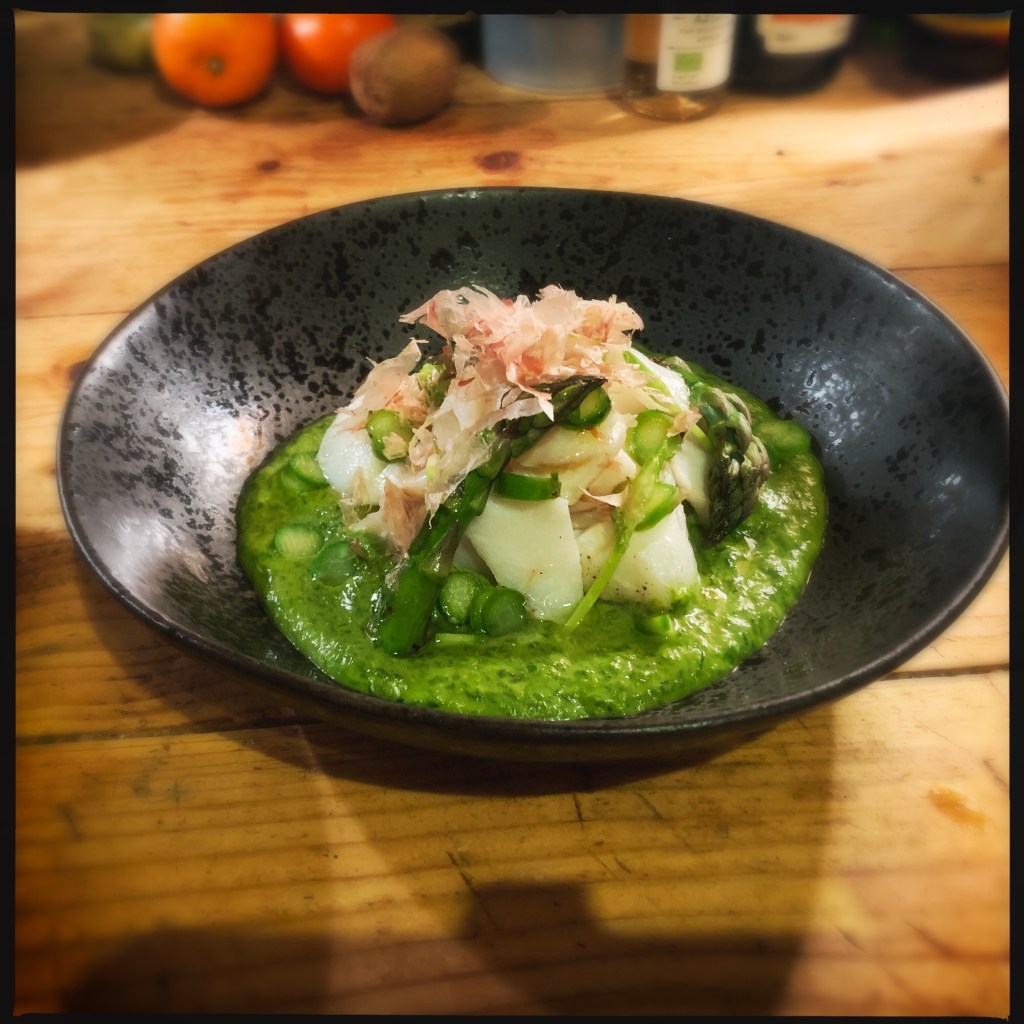
Ingredients
serves 4
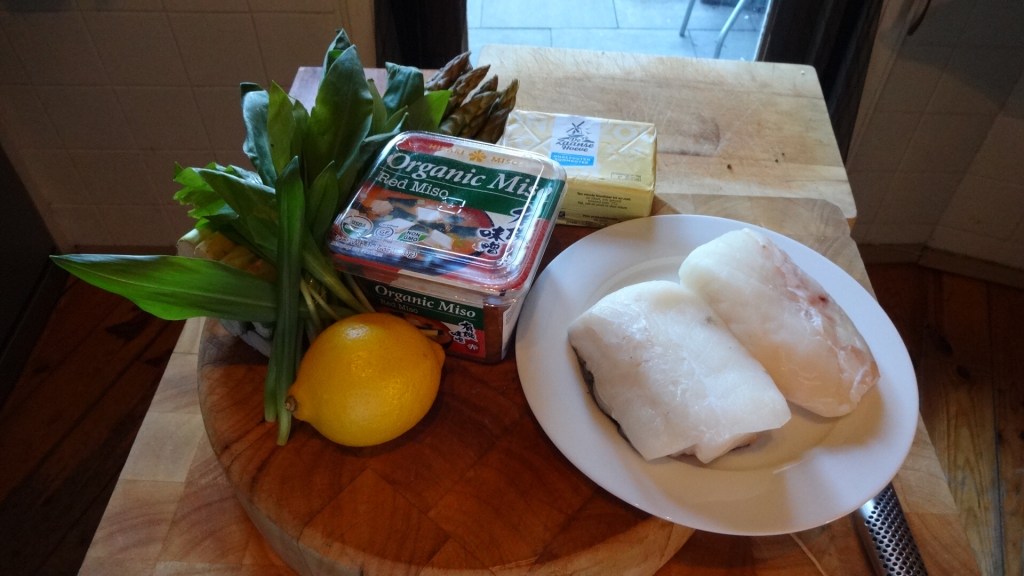
COD
• 500g of cod fillet, skinned
• 100g of rock salt
• 200g of unsalted butter, cubed
• lemon juice, to taste
WILD GARLIC MISO
• 60g of miso paste, brown rice miso if available
• 30g of wild garlic, leaves picked and washed, reserve the flowers for garnish
• 20ml of water
• 160ml of grapeseed oil
• lemon juice, to taste
• salt, to taste
ASPARAGUS
• 18 asparagus spears
• salt, to taste
• lemon juice, to taste
TO SERVE
• 50g of bonito flakes , grated
Method
1 Place the cod fillet in a dish or baking tray and sprinkle over the rock salt to cover. Leave to salt for 7 minutes
2Meanwhile, place the miso, wild garlic leaves and water in a blender and blitz together until smooth. Gradually add the oil while continuing to blend and allow the mixture to emulsify (as if making a mayonnaise). When fully combined, season to taste with a little lemon juice and salt
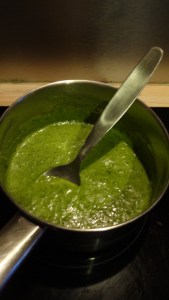
3 After 7 minutes rinse the salt from the cod under cold water and pat the fish dry with kitchen paper. Cut into 4 equal portions and set aside
4 Preheat to high a griddle pan.
5 To cook the cod, place the butter in a pan and cook over a high heat to create a brown butter (beurre noisette). As soon as the butter starts to foam and is lightly golden with a nutty aroma, remove from the heat and cool quickly to stop it from burning
6 Pour the butter into a wide pan (large enough to fit all 4 pieces of cod) and warm through gently to 60°C. Add the cod and gently poach for 5 minutes on each side, being careful to keep the temperature low
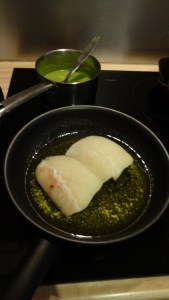
7 While poaching, griddle the asparagus spears for 2 minutes until tender, turning regularly. Thinly slice the cooked spears into 2mm thick rounds and season with a little lemon juice, salt and some of the butter from cooking the cod
8 To serve, spoon a generous amount of the wild garlic miso into each serving dish. Drain the cod from the butter and pull apart into large flakes. Dress these with a little more salt, lemon juice and butter and add to the dishes
9 Scatter over the asparagus slices and garnish with the reserved wild garlic flowers and a pinch of bonito flakes.
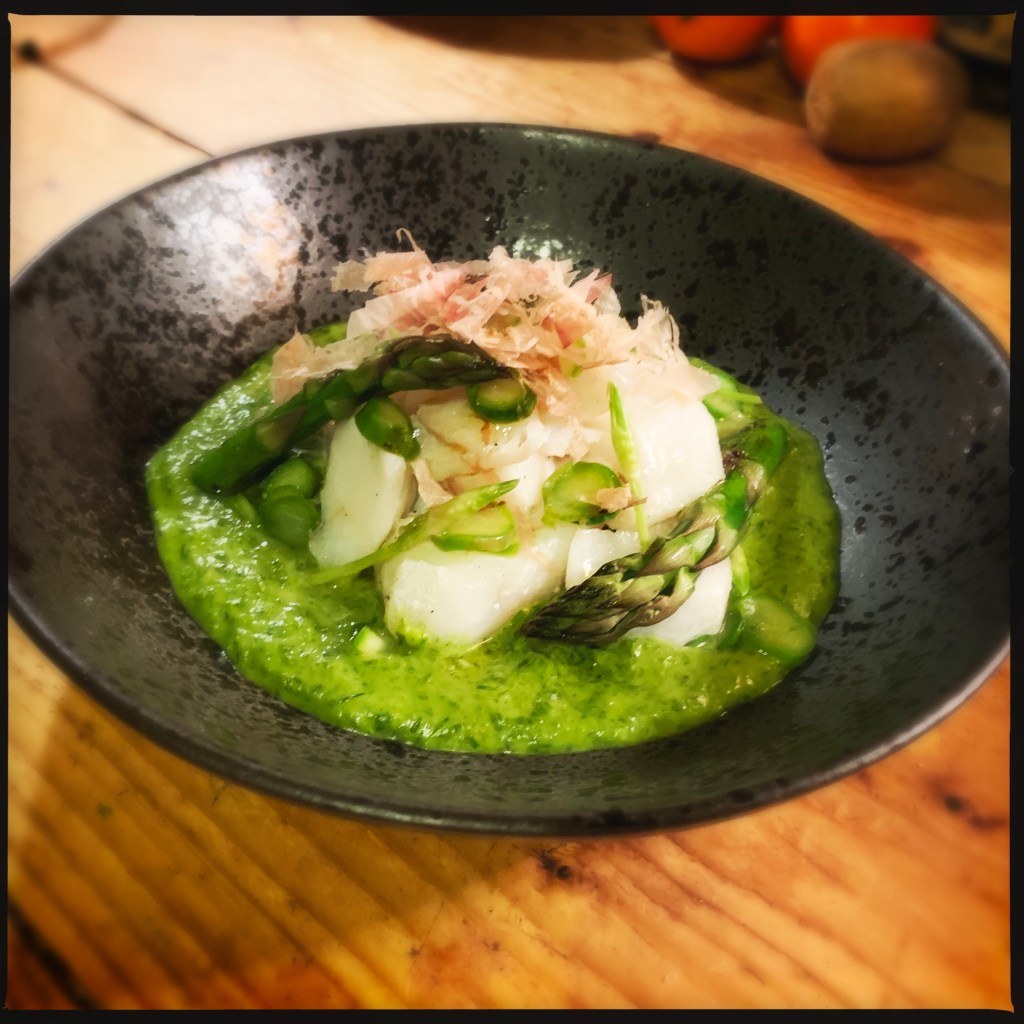
Leave a comment